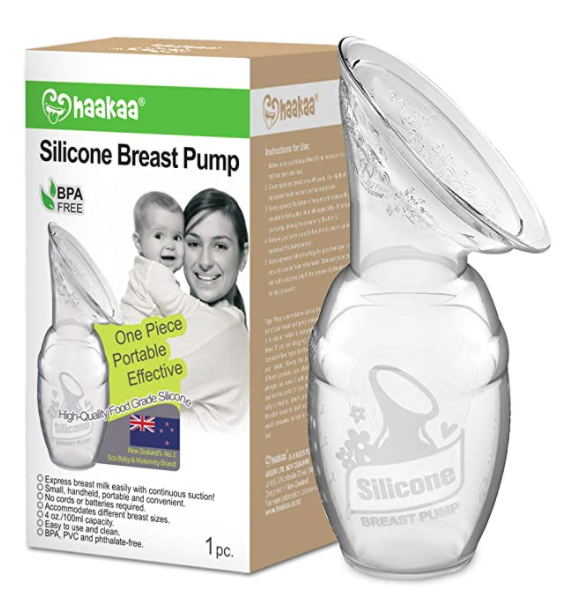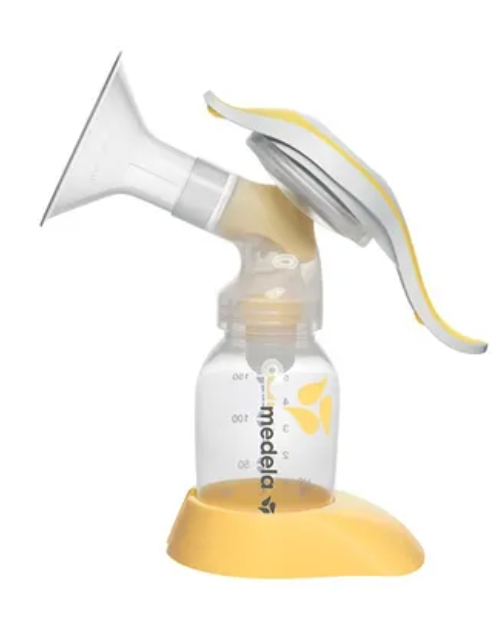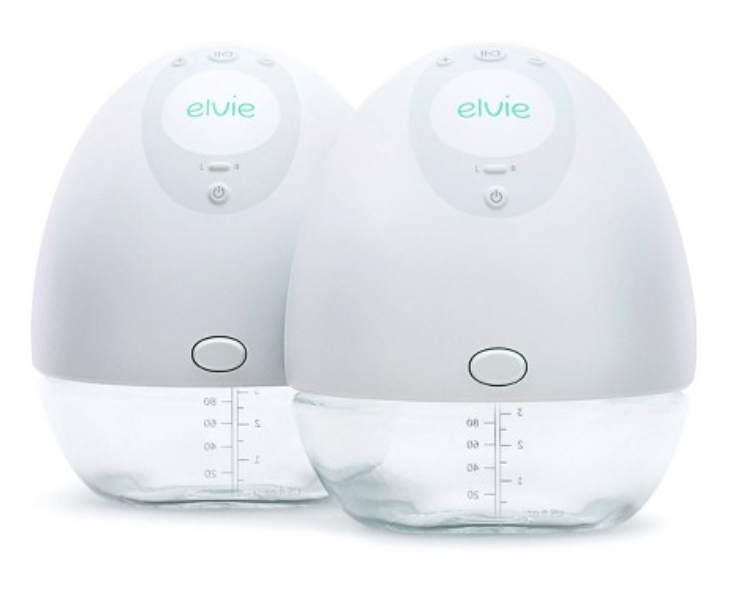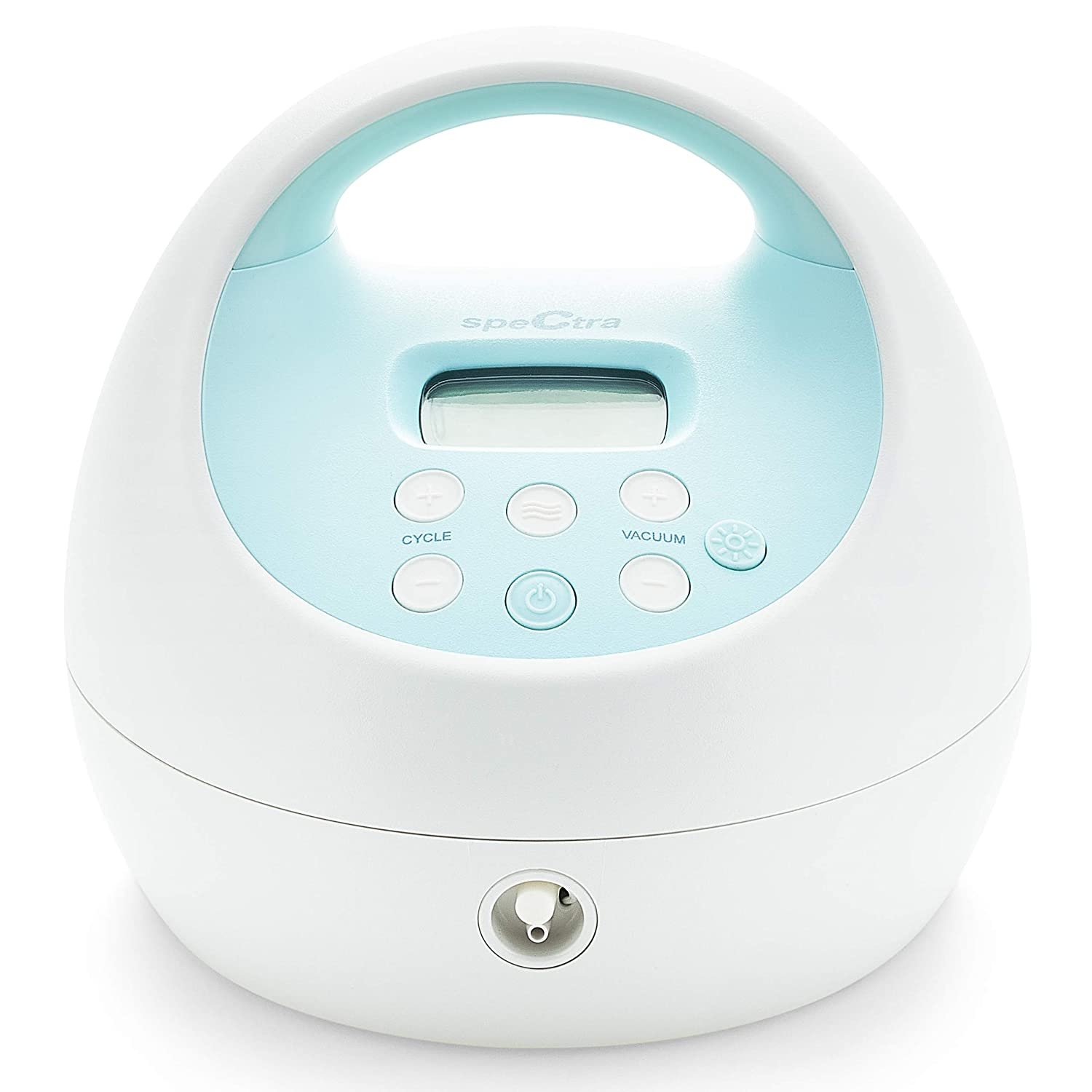Choosing Your Breast Pump: A Complete Guide by Natasha Dodge
Searching for a guide to help you choose a breast pump? Look no further! While there are many different types of breast pumps and brands on the market, it can be easy to feel overwhelmed and not know where to start. Choosing a pump can also be a very individual experience so it can also be helpful to ask yourself and/or a Lactation Consultant a few questions before you purchase your pump.
Whether you are still expecting a baby or maybe in the first weeks or months postpartum, follow the guide below to jump start your search!
Prenatal breast pump shopping:
Many parents who anticipate nursing will look into breast pumps at some point during the prenatal period. This can be a great way to prepare for baby and for the nursing/pumping relationship.
Some reasons you might want to purchase a breast pump prenatally:
You have used a breast pump in the past you want to use again
You are returning to work soon after baby arrives and expect to pump at work
You are inducing lactation
You are planning on being away from baby on a regular basis
You had a past history with nursing and you want to pump (either again or for the first time)
Your insurance covers a breast pump
You prefer feeding baby expressed milk
While purchasing a pump prenatally can be helpful, sometimes circumstances can change once your baby is born - for example, you may decide that you want to exclusively pump and therefore might need a more durable breast pump. On the other hand, if you decide you want to breastfeed and then pump while working/while at work, you may choose a portable or a wear-in breast pump. And while this uncertainty can feel overwhelming, getting acquainted with a few different types of breast pumps ahead of time can be helpful and can give you a good handle on what to look for later on.
Also remember, insurance covers breast pumps so unless you are looking for something very specific, there is no need to add a breast pump to your registry - let them buy you that stroller you have your eyes on instead!
Some things you can do in the prenatal period:
Stop by The Breastfeeding Center! In our shop we have a “pump bar” where you can browse and/or purchase pumps by Medela, Spectra, Elvie, Ameda, Lansinoh, Motif, Baby Buddha and more. Our staff would also be more than willing to discuss your concerns, answer questions, and provide any additional advice for your pump search.
Our Breastfeeding & Pumping classes also talk about different types of pumps and can be a great way to learn more (class is led by an IBCLC from The Breastfeeding Center!)
Book a lactation consultation with an Lactation Consultant (IBCLC) at The Center
Read customer reviews online
Watch YouTube videos of user reviews (there’s a ton!)
Postnatal breast pump shopping
Welcome baby! Now that baby is here, your perspective around the pumping relationship may have changed - you may have decided you want to pump after not anticipating to, maybe a Lactation Consultant recommended a Hospital Grade Pump you want to give a try, or maybe you want something super low maintenance to use occasionally. Whatever your pumping goals are, there is a pump for you.
There are about 6 different types of breast pumps:
Silicone
Max Suction Levels: N/A (manual)
Frequency of Use: occasional use
A Silicone Breast Pump is a pump that can be used manually. They are helpful for providing constant suction as they suction to the breast and then can be left hands-free.
Some parents use them for stimulating a let down, massaging the breast, removing clogged ducts, catching milk on one side while baby nurses on the other, collecting leaked milk, and so much more!
They are portable and great for on-the-go as they only are one piece with no small parts or assembly required. They are also easy to clean (dishwasher safe).
Examples: the Haakaa Silicone Breast Pump (pictured), the Legendairy Silicone Collection Cups, the Spectra CaraCups (now available at The Breastfeeding Center!)
2. Manual
Max Suction Levels: N/A (manual)
Frequency of Use: occasional use
A Manual Breast Pump uses hand-operation to express milk. They are portable and great for travel as they do not require a power source and are also relatively affordable compared to some electric pumps.
You can pump as much or as little with the hand pump, however, hand pumps do require a little bit of technique as you can control suction and speed.
Manual Breast Pumps are great for occasional use, like if you need to express occasionally, want to pump once-a-day, are travelling, etc. Manual pumps can also assist with breast/chest emptying at the end of a feeding session, can help increase supply, stimulate a let down, and more!
Examples: the Medela Harmony Manual Pump (pictured), the Ameda Manual Hand Pump, the Lansinoh Manual Breast Pump
3. Wearable
Suction levels: 220-250 mmHg
Frequency of Use: occasional - frequent use
Wearable Breast Pumps are some of the newer pumps on the market. Wearable Breast Pumps are electric breast pumps that fit inside your bra.
While traditional electric pumps typically require to be plugged in or are not necessarily discreet while mobile, Wearable Breast Pumps are great for parents on-the-go or for parents that are feeling crunched on time - Wearable Breast Pumps are time-saving as they are meant to be used while multitasking. We recommend a Wearable Breast Pump if you find that you often need to work and pump at the same time, want to pump discreetly in public (like in meetings), prefer discretion while pumping, double pump (pumping both sides at the same time), and want to be hands-free.
Wearable pumps are not necessarily affordable, however, the convenience of the pump can be worth it.
Also, because wearable pumps are newer to the market of breast pumps, we recommend checking out user reviews. We also recommend discussing with a Lactation Consultant about how a wearable pump might work for you, especially if this is your first time expressing milk or pumping.
Examples: the Elvie (pictured), the Willow
4. Portable/Wireless Breast Pumps
Suction levels: ~ 220-260 mmHg
Frequency of Use: occasional
Portable Breast Pumps are wireless pumps that operate well for occasional use. They are great for on-the-go, preparing a small stash to use for while you are out, wearing while you multitask, hands-free pumping, pumping at work, pumping in public, and more! For stay-at-home parents or parents with newborns and older children, for instance, portable pumps can be great time-savers.
Portable Breast Pumps can vary in price (some consider both the Elvie and the Medela Harmony Manual Pump to both be portable pumps). However, for the purposes of this blog, we refer to Portable Breast Pumps as wireless, electric pumps that are not wear-in-your-bra pumps.
Also note, some pumps may require you to hold the pump or flanges in place while others can be hands-free. All pumps, however, can be made hands-free with a well-fitted nursing & pumping bra.
Wireless pumps do not reach the same suction levels as Double Electric Personal Use Pumps or Hospital Grade Pumps, so they are less likely to be recommended for increasing or establishing a milk supply, for example, and can be helpful for maintaining a supply.
Examples: the Spectra S9 (pictured), the Medela Freestyle, BabyBuddha Portable Breast Pump
5. Double Electric, Personal Use
Suction levels: 250-280 mmHg
Frequency of Use: daily use
Double Electric Personal Use Pumps are going to be the closest you can get to a Hospital Grade Breast Pump without having to purchase one. These pumps are great for parents who are trying to increase or establish a milk supply, are exclusive pumpers, are building up a milk stash, and more.
In terms of pump usage, Double Electric Personal Use Pumps are going to be durable for long-term use and will have a motor that can support daily usage. These pumps can also offer different settings and options for vacuum and speed and can also be used for single or double-sided pumping.
If you are pumping daily, these pumps will be the most efficient in the long-term and will be able to keep up with the daily demand.
Examples: The Spectra S1 (pictured) or Spectra S2, The Medela Sonata, the Medela Pump in Style Advanced, The Ameda Mya Hospital Strength Pump
6. Hospital Grade
Suction levels: 250-300 mmHg
Frequency of Use: daily use
Hospital grade pumps are able to:
Increase, establish, and maintain a milk supply in a way that a home pump may not be adequate for
Be used hygienically and safely by multiple users
Be highly durable and many for frequent daily use over many years
With this in mind, there is no doubt that Hospital Grade Pumps are durable and reliable. While Double Electric Personal Use Pumps can be helpful for some parents, others may need the extra strength and long-term usage that a Double Electric Personal Use Pump just can’t provide.
Some families choose a Hospital Grade Pump when they want to establish a milk supply in the early weeks, increase their milk supply again if there has been a dip, nurse a little one born prematurely, support nursing twins, when there was a separation between the nursing parent and baby (like NICU), when returning to work, when traveling, and more!
It is often recommended that families rent a Hospital Grade Pump as the cost of them for purchase can be quite high for a family welcoming a little one(s).
At the Breastfeeding Center we rent out the Medela Symphony, the Ameda Platinum, and the Spectra S3. Learn more about our rentals, here.
Examples: The Medela Symphony (pictured), the Ameda Platinum, the Spectra S3
Some Questions to Ask Yourself
Once you have a general idea as to why you might want to use a breast pump, you can then decide which type of pump you want to use or try. Some other questions you might want to ask yourself before purchasing your pump might be:
(If you used a breast pump in the past) “What did I like about the breast pump?”
If you have used a breast pump before that you have liked, make a list of some of the reasons why you liked that pump. Was it because it was mobile? Did you like the ability to recharge your pump? Was it reliable? Or durable? Were the parts easy to find? Is it in your budget? Take a look at the old pump to see if there have been any new updates to that pump or if the same brand has added different types. This can help you narrow down your choice later on.
You can also test an old pump at the Breastfeeding Center by scheduling a pump testing appointment, here.
“Where / how do I want to pump?”
This can sometimes be a hard question to answer prenatally, however, think about what the environment around your pumping session might look like. If you are only pumping at night, you may be sitting more than pumping while multitasking so you may want a pump that has a night light like the Spectra S1/S2/S3. Or if you are pumping and working you may want a Wearable Breast Pump like the Elvie or the Willow or a pump that is lightweight that can travel to and from work like the Medela Freestyle.
“How much do I want to spend / Does insurance cover?”
Insurance companies do sometimes cover the cost of a breast pump. To learn more about what your insurance might cover, we recommend calling your insurance carrier to confirm which pumps they may or may not accept. Insurance companies also only accept pumps from a Durable Medical Equipment (DME) Supplier, so if coverage is important to you, check that your purchase is from a qualifying supplier so that you can receive reimbursement.
“How much do I want to express using the breast pump?”
If you are exclusively pumping, you are likely going to want to consider a Wearable, Portable, Double Electric Personal Use Pumps, and/or Hospital Grade Breast Pump as speed and efficiency will be best with more durable pumps. These pumps will be able to keep up with frequent usage and are more likely to be reliable in the long-term.
If you are using a pump occasionally, less frequently, or as needed you might want to try a Manual, Wearable and/or Portable Breast Pump.
Silicone Breast Pumps on the other hand (literally!) are great for all nursing parents as they can help with so many nursing-related concerns that aren’t just related to pumping.
“Single versus double expression?”
Lactation consultants recommend a pump that can accomodate double expression. This means you can pump on both sides at the same time. Occasionally, single-side pumping can be helpful if you like to pump and nurse at the same time, or are using the pump to help manage engorgement or a plugged duct.
“Do the functions / settings on the pump matter?”
Many pump brands will have their own type of “technology” that mimics the sucking of a nursling. For example, the Medela Symphony utilizes a “2-Phase Expression” technology that allows the pump to operate an initiation and expression phase. These technologies will determine what functions you can adjust on the pump. For example on the Medela Symphony, you can manually adjust both the speed and vacuum together on a dial and can use the let-down button to swap between initiation and expression phases. For the Spectra S3, however, you can adjust the vacuum and the speed individually from each other, as well as utilizing their “let-down” button/function.
You may decide that you like to adjust only certain settings, however, adjustability for the vacuum/suction will help you establish the most efficient and comfortable pumping sessions.
“Do I want to see the milk being expressed?”
Some newer pumps such as the Wearable Breast Pumps like the Elvie and the Willow rely on the additional app to monitor how much milk is expressed. This means that you cannot physically see the bottle as it is being filled. Many parents do not mind this, however, if you are easily frustrated with apps or digital technology, it may be better to stick with a Portable Breast Pump and a hands-free pumping bra.
“How much time do I have?”
If you are just returning from the hospital and decide that you would like to pump, you may find that you need a pump the same-day. In this instance, your quickest solution might be to rent a Hospital Grade Pump from a local organization (like the Breastfeeding Center) or a local hospital. Or you can purchase a Double Electric Personal Use Pump to rely on throughout the duration of your nursing journey, for example.
If you are noticing fluctuations in your milk supply, your Lactation Consultant might recommend renting a hospital grade pump as soon as possible so that you can make adjustments to your supply or that you use your Double Electric Personal Use Pumps.
If you are not expecting to continue to pump long term, we suggest renting a Hospital Grade Pump rather than purchasing a pump at this time. You may also consider having a Manual Breast Pump or a backup as well.
If you are returning to work, try purchasing or renting your pump in advance of returning to work so you can start practicing and feel comfortable with the pump, determine your pump routine while working or while at work, and find confidence in the next step of your journey.
“How much do I want to spend?”
Once you have decided which type(s) of pump(s) you are interested in, it can be helpful to think about the price. Are the parts easy to find if they need to be replaced quickly? Are the parts that need to be replaced more frequently affordable? Is there a warranty on the pump? Can I get the pump covered through my insurance?
“Can I rent the pump?”
Hospital grade pumps can be extremely expensive to purchase (the Symphony is a whopping $2472 and the Ameda Platinum is $2,310). Because of this, renting Hospital Grade Breast Pumps can be more affordable. Check to see if there are hospital grade pumps to rent in your area. At the Breastfeeding Center, we rent out the Medela Symphony, Ameda Platinum, and the Spectra S3. You can learn more about rentals at the Breastfeeding Center, here.
“Do I have a back-up?”
If you have chosen a breast pump to use daily, we recommend ensuring that you have a backup just in case of emergencies. This might be a Manual Breast Pump or a Portable Breast Pump. Or if you are using a Double Electric Personal Use Pump or Hospital Grade Pump, consider purchasing a battery pack that you can tape to the pump for portability. This will be reassuring to have in the instance of a power loss or if your main pump runs into any technical issues.
Closing Thoughts
With anything related to parenting a baby, there are so many opinions, considerations, conversations, etc. However, at the Breastfeeding Center we always suggest that the best plan for you is whatever works best for you and your family. When considering purchasing or renting a breast pump, it is important to be honest with yourself and your needs. This can be a daunting new step for you and your family, however, infant feeding can be such a rewarding experience for everyone involved. And if you have any further questions regarding purchasing a breast pump here are some more resources available for you:
Book an appointment with a Lactation Consultant (IBCLC) here.
Learn more about rentals at the Breastfeeding Center here.
Shop breastfeeding & pumping supplies here.
Schedule a pump testing appointment here.






